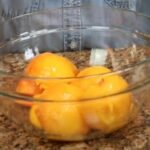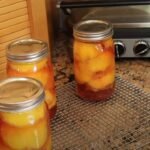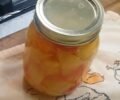Basics of Water Bath Canning with Peaches: A Step-by-Step Guide
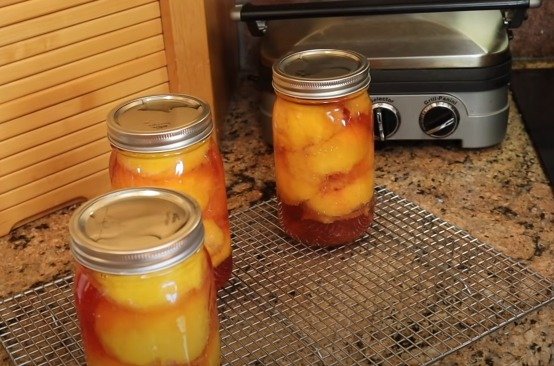
peaches
1
Welcome to Rosebread Homestead, your go-to community for food security, emergency preparedness, and self-reliance. Today, we're diving into food security and emergency preparedness by exploring the basics of water bath canning. This guide is perfect for beginners eager for accurate canning information, focusing on both pressure canning and water bath canning.
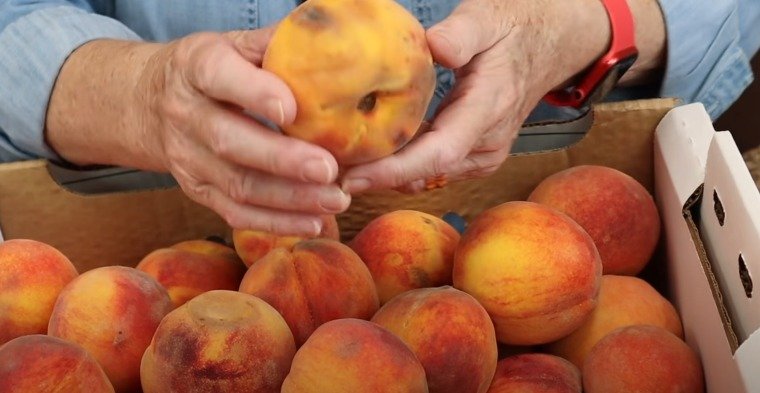
2
Introduction to Water Bath Canning
We recently received a couple of lugs of beautiful, freestone peaches from a local farmer. These peaches are ideal for canning as the pits pop right out. With one lug ready to can, we'll be demonstrating the fundamentals of water bath canning using these peaches.
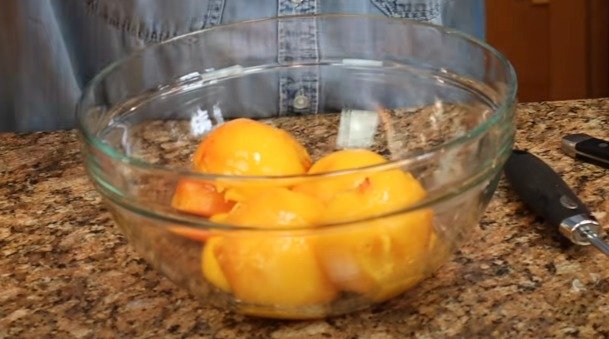
3
Preparation is Key
Getting ready for canning is half the battle. Here’s what you’ll need:
Peaches: Rinse them and prepare to slip the skins by boiling them for a couple of minutes, then transferring them to cold water.
Canner: You can use a regular stock pot as long as it holds at least four jars and has a rack to prevent the jars from sitting directly on the bottom.
Jars, Lids, and Rings: Wash them in hot, soapy water and rinse well.
Tools: A sharp knife, a little tool to retrieve peaches from hot water, and a pot of syrup (light syrup recommended: two quarts of water to half a cup of sugar).
Slipping the Skins
Boil the Peaches: Place the peaches in boiling water for about three minutes.
Transfer to Cold Water: Move the peaches to a sink full of cold water to loosen the skins.
Slip the Skins: The skins should peel off easily. If not, use a paring knife to help.
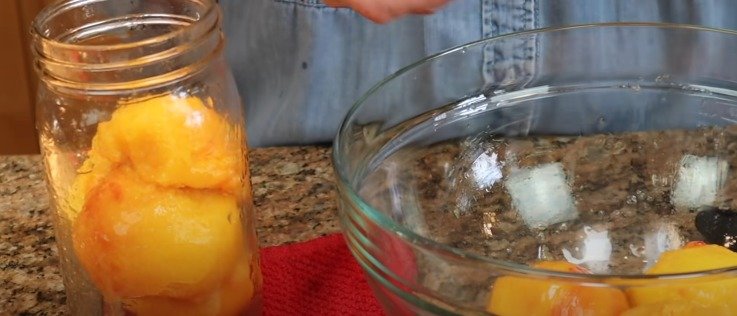
4
Preparing the Jars
Cut and Pit the Peaches: Cut the peaches in half, remove the pits, and place them in the jars. Make sure to cut out any blemishes.
Add Syrup: Pour hot syrup over the peaches, leaving one inch of headspace. Check for air bubbles and add more syrup if needed.
Seal the Jars: Wipe the rims, place the lids on, and screw the rings finger-tight.
Canning Process
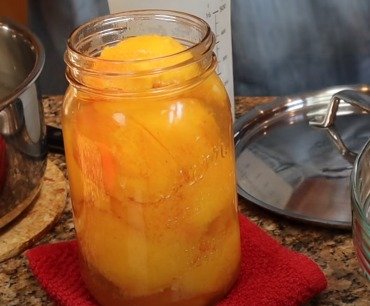
5
Prepare the Canner: Fill the canner with warm water and place the jars on the rack. Ensure the water covers the jars by at least an inch.
Boil the Jars: Bring the water to a rolling boil. For our elevation (5000 feet), the peaches need to boil for 35 minutes.
Cool the Jars: Turn off the heat and let the jars sit in the water for a few minutes to prevent siphoning.
Final Steps
Remove the Jars: Carefully take the jars out of the canner and place them on a towel to cool.
Check the Seals: After cooling, check the seals by pressing the center of each lid. If it doesn’t pop, the jar is sealed.
Storage and Shelf Life
Properly canned peaches can last for years. We have jars that are five years old and still perfectly good. Rotating your stock ensures you always have fresh supplies.

6
Conclusion
Water bath canning is a simple, effective method for preserving high-acid foods like peaches. With these basics, you can confidently can your own peaches and enjoy them year-round. For more detailed guides and canning tips, stay tuned to Rosebread Homestead. Happy canning!
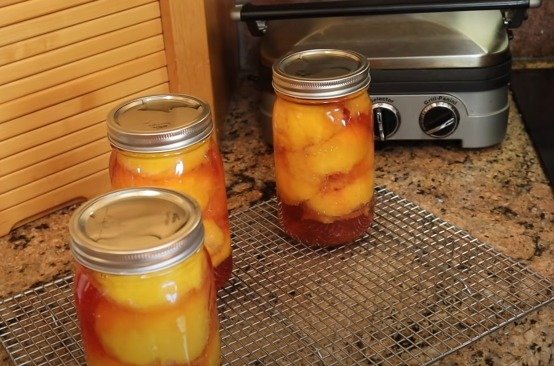
Ingredients
peaches
Directions
1
Welcome to Rosebread Homestead, your go-to community for food security, emergency preparedness, and self-reliance. Today, we're diving into food security and emergency preparedness by exploring the basics of water bath canning. This guide is perfect for beginners eager for accurate canning information, focusing on both pressure canning and water bath canning.

2
Introduction to Water Bath Canning
We recently received a couple of lugs of beautiful, freestone peaches from a local farmer. These peaches are ideal for canning as the pits pop right out. With one lug ready to can, we'll be demonstrating the fundamentals of water bath canning using these peaches.

3
Preparation is Key
Getting ready for canning is half the battle. Here’s what you’ll need:
Peaches: Rinse them and prepare to slip the skins by boiling them for a couple of minutes, then transferring them to cold water.
Canner: You can use a regular stock pot as long as it holds at least four jars and has a rack to prevent the jars from sitting directly on the bottom.
Jars, Lids, and Rings: Wash them in hot, soapy water and rinse well.
Tools: A sharp knife, a little tool to retrieve peaches from hot water, and a pot of syrup (light syrup recommended: two quarts of water to half a cup of sugar).
Slipping the Skins
Boil the Peaches: Place the peaches in boiling water for about three minutes.
Transfer to Cold Water: Move the peaches to a sink full of cold water to loosen the skins.
Slip the Skins: The skins should peel off easily. If not, use a paring knife to help.

4
Preparing the Jars
Cut and Pit the Peaches: Cut the peaches in half, remove the pits, and place them in the jars. Make sure to cut out any blemishes.
Add Syrup: Pour hot syrup over the peaches, leaving one inch of headspace. Check for air bubbles and add more syrup if needed.
Seal the Jars: Wipe the rims, place the lids on, and screw the rings finger-tight.
Canning Process

5
Prepare the Canner: Fill the canner with warm water and place the jars on the rack. Ensure the water covers the jars by at least an inch.
Boil the Jars: Bring the water to a rolling boil. For our elevation (5000 feet), the peaches need to boil for 35 minutes.
Cool the Jars: Turn off the heat and let the jars sit in the water for a few minutes to prevent siphoning.
Final Steps
Remove the Jars: Carefully take the jars out of the canner and place them on a towel to cool.
Check the Seals: After cooling, check the seals by pressing the center of each lid. If it doesn’t pop, the jar is sealed.
Storage and Shelf Life
Properly canned peaches can last for years. We have jars that are five years old and still perfectly good. Rotating your stock ensures you always have fresh supplies.

6
Conclusion
Water bath canning is a simple, effective method for preserving high-acid foods like peaches. With these basics, you can confidently can your own peaches and enjoy them year-round. For more detailed guides and canning tips, stay tuned to Rosebread Homestead. Happy canning!

Leave a Review
Please log in or register for a new account in order to leave a review.


